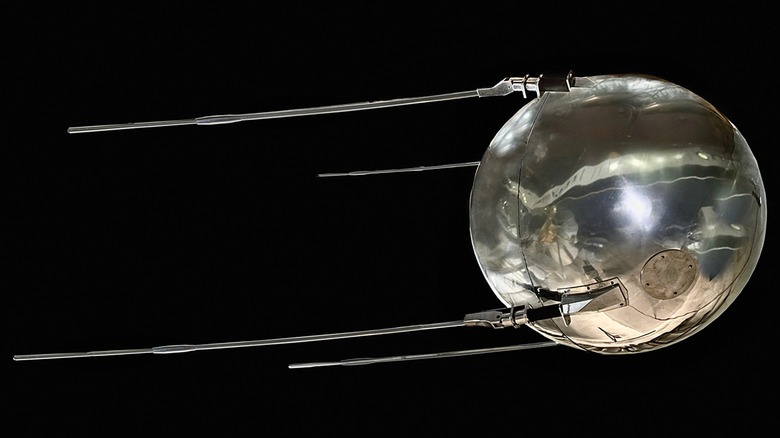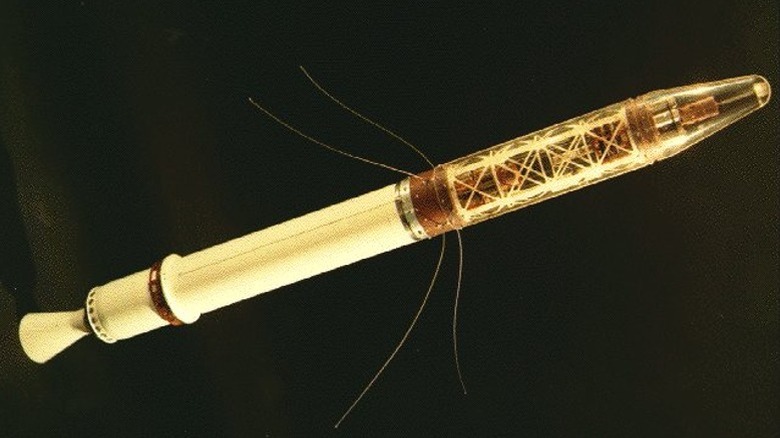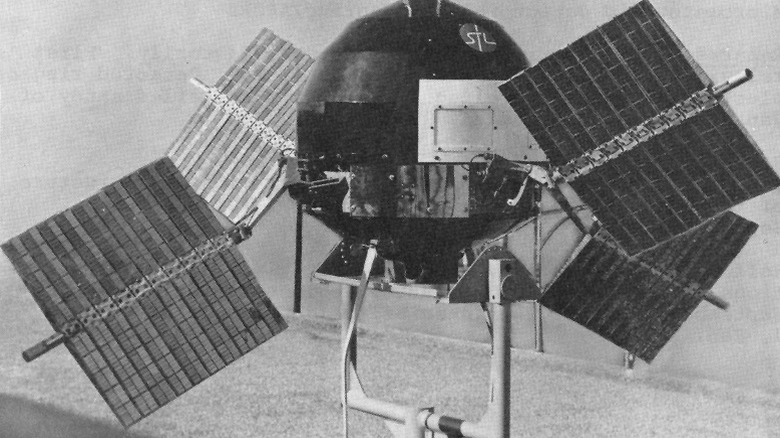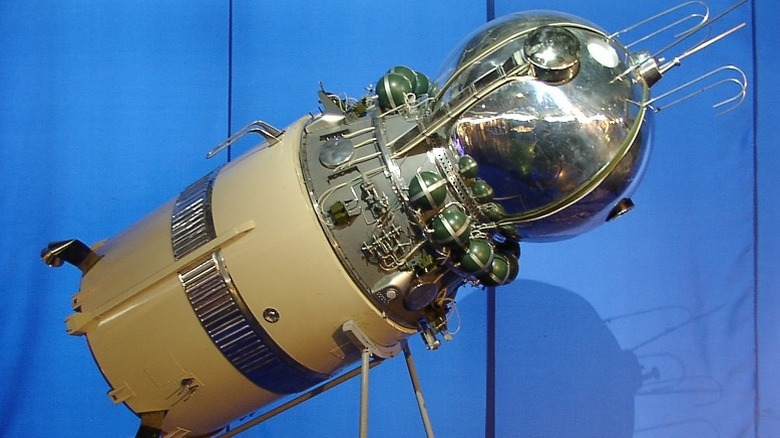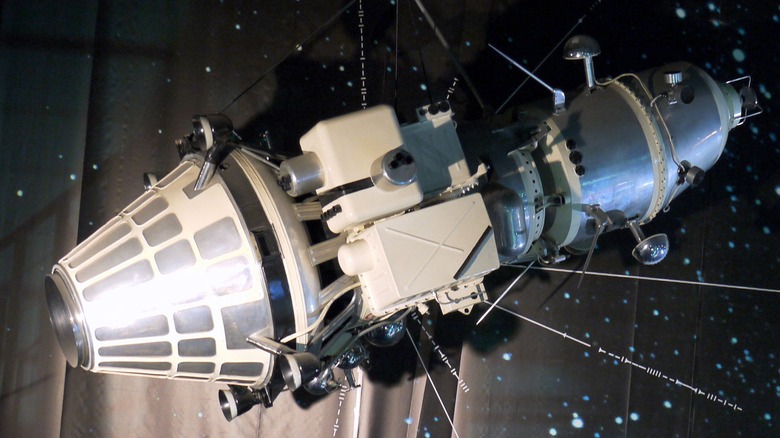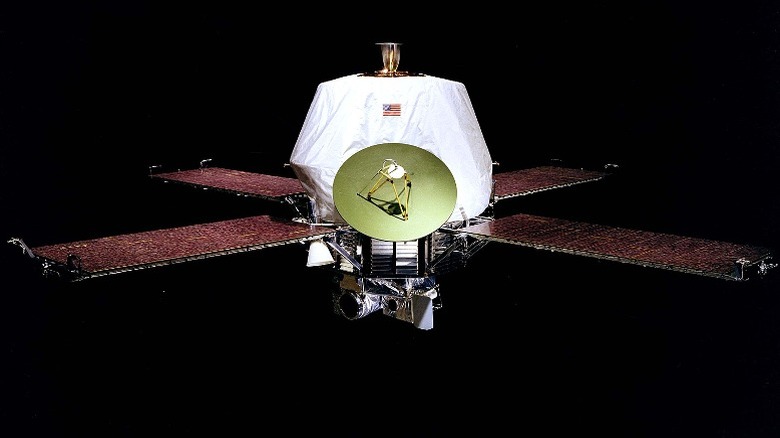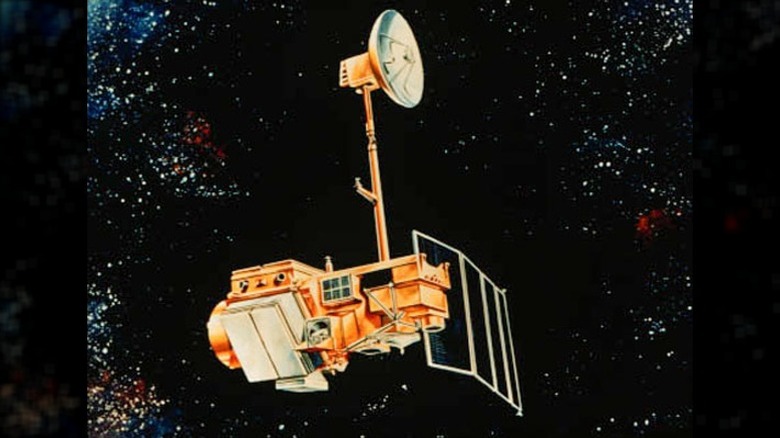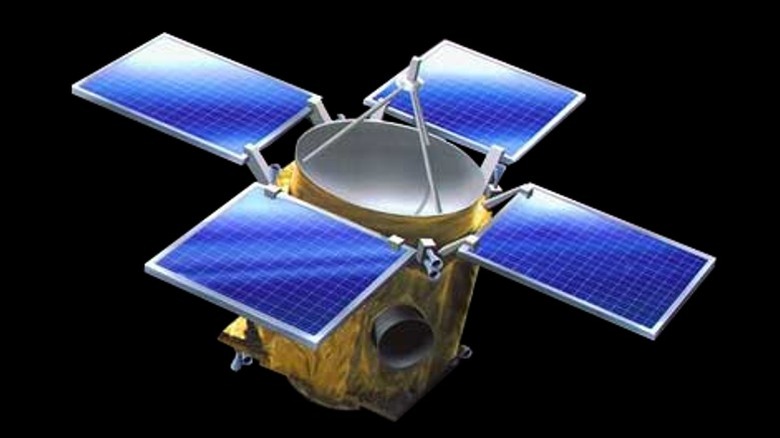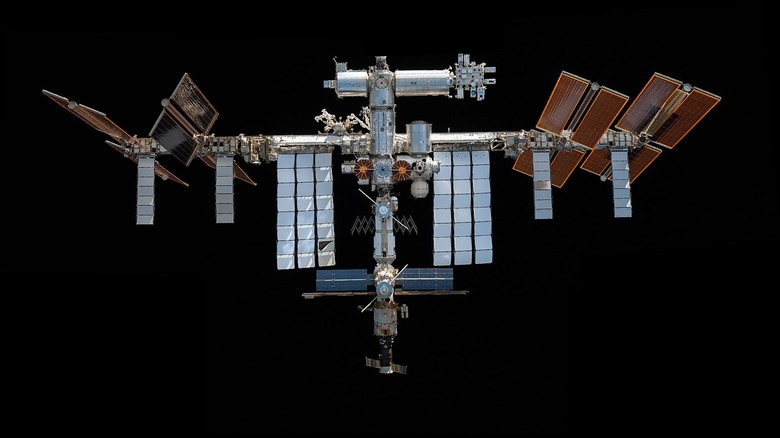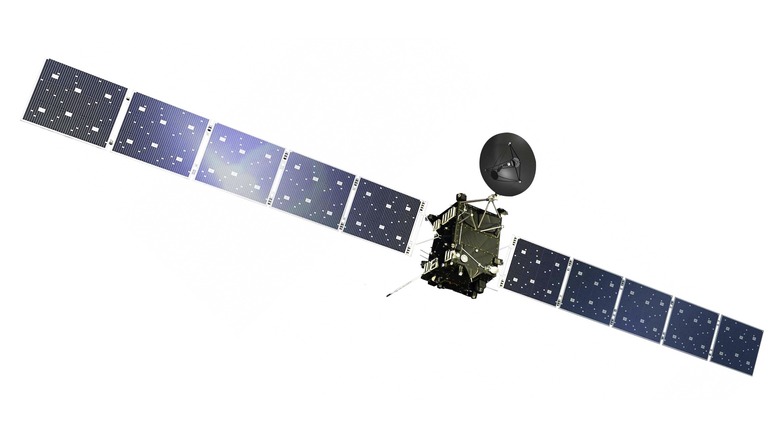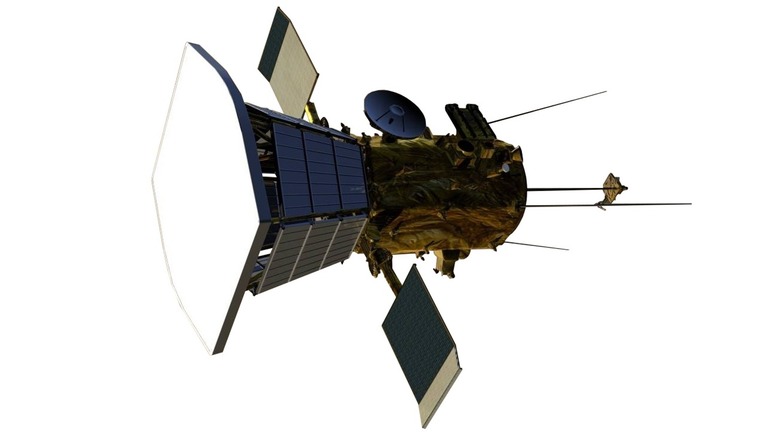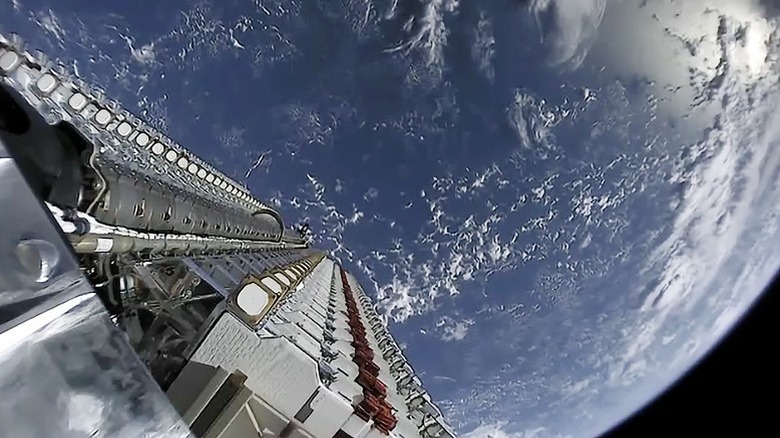12 Of The Most Important Satellite Launches In History
In barely a century, humanity has not only conquered the skies but also ventured into the vast expanse of space surrounding our planet. And if that weren't enough, we have gone as far as setting up permanent (or long-term) probes in space.
The word satellite simply means an object that revolves around a bigger object. This could either be a normal phenomenon like the moon orbiting Earth or an artificial one like the Starlink satellite connecting you to the internet. Obviously, artificial satellites have a shorter history than, say, the moon. The first one was launched in 1957. But since then, thousands of satellites have been launched and now orbit our planet.
These satellites help with GPS navigation, telecommunication, weather monitoring, military surveillance, and so much more. Currently, there are over 10,000 satellites in Earth's orbit. But, there are some satellite launches that have left their mark on history. Whether for their scientific achievements or geopolitical importance, here are 12 of the most important satellite launches in history.
The first satellite ever — Sputnik 1 (1957)
When the Soviet Union launched the first-ever satellite not everyone was happy.
In 1955, the United States announced it was working on a satellite scheduled to launch in 1957 during the International Geophysical Year. However, the Soviets also announced work on a satellite of their own. On October 4, 1957 they beat the Americans to the punch, launching the Sputnik 1 and quickly followed up with another satellite, the Sputnik 2. Meanwhile, the United States was struggling to keep up — its own Vanguard satellite had exploded the first time a launch was attempted.
The Sputnik 1 was a spherical object just like a basketball, but with a 22.8-inch diameter and weighing 183.9 pounds. It spent three months on its voyage around the Earth, completing 1,440 orbits before finally re-entering the atmosphere on January 4, 1958. However, while the Sputnik 1 was still in orbit, its batteries ran out after 22 days, and it stopped transmitting any signals on October 26.
This Soviet mission placed them ahead of the United States in the space race, which had its military implications. More importantly, it was a breakthrough for science, and radio stations across the world monitored the signals from the Sputnik 1. It also made the United States invest more in its Space projects, adding the space race to one of the fronts of the Cold War.
[Featured image by Steve Jurvetson via Wikimedia Commons | Cropped and scaled | CC BY 2.0]
The first U.S. satellite — Explorer 1 (1958)
The Explorer 1 was the first satellite successfully launched by the United States, and the third to launch in the world, behind the Sputnik 1 & 2. The U.S. military played a key part in its construction authorizing the use of Jupiter 2 rockets, originally meant for inter-ballistic missiles, to propel the satellite into space. Then, NASA's Jet Propulsion Laboratory built and operated the satellite.
A team led by Dr. James Van Allen at the University of Iowa designed and built the equipment placed on the satellite to monitor cosmic rays from space. This eventually led to the discovery of the radiation belts which were named Van Allen belts in his honor. This also made it the first satellite to carry scientific instruments into space.
The Explorer 1 launched on January 31, 1958 and crowned the effort of the U.S. team. It weighed 30.66 pounds and was 80 inches long and 6.25 inches thick. This satellite was faster than its predecessor and could orbit the Earth in 114.8 minutes. In total it made 58,000 orbits around the Earth before re-entry on March 31, 1970.
However, it stopped transmitting signals on March 23, 1958. The success of the Explorer 1 led to other Explorer projects by the United States and while some failed others like the Explorer 3 & 6 helped expand scientific research.
The first satellite to take pictures of Earth — Explorer 6 (1959)
The Explorer 6 satellite launched on August 7, 1959 from Cape Canaveral, Florida and was the first satellite to take a picture of the Earth from space. Its mission was to observe the effects of radiation, cosmic rays, Earth's magnetic field, and how radio waves travel in the upper atmosphere. In addition to the scientific equipment needed to carry out the research the satellite was also equipped with a device to capture photographs of the Earth.
On August 14, 1959, the Explorer 6 picture was taken 17,000 miles above Mexico and took a total of 40 minutes to transmit back to the base in Hawaii. The picture was of a part of the ocean featuring some clouds.
The satellite had a spherical shape with solar panels attached to it so that it could charge its batteries when in orbit and weighed about 142 pounds. However these solar "paddles" failed to launch properly and on October 6, 1959 the satellite stopped transmitting a signal back to Earth. And by July 1, 1971 the satellite was no more.
The first satellite to carry a human — Vostok 1 (1961)
You may have heard of Yuri Gagarin the first human to go to space. Well, the spacecraft he boarded for this voyage was the Vostok 1 satellite. The main mission of this satellite was to carry the first human into space and orbit the planet. At exactly 2:30 UTC on April 12, 1961 the Vostok 1 launched from Baikonur, Kazakhstan as the first manned satellite in space.
After entering space, the Vostok 1 moved to orbit the planet. The cosmonaut onboard maintained contact with the ground stations keeping them abreast of the state of the craft. The Vostok 1 engaged its retro fire at 07:25 UTC and when it was just 4.34 miles from the ground, the hatch opened and Yuri ejected, landing with a parachute at 08:05 UTC. The entire trip was 1 hour 48 minutes. He found himself at Saratov, a Russian City about 600 miles from Moscow.
The Vostok 1 was a monumental step in space travel — finally mankind had reached one of the final frontiers. However, while the United States president John Kennedy congratulated the Soviets many in the U.S. didn't like the fact the Soviets were ahead of them technologically with space research. This led to John F. Kennedy announcing the mission to put boots on the moon by 1970.
[Featured image by HPH via Wikimedia Commons | Cropped and scaled | CC BY-SA 3.0]
The first satellite to orbit the moon — Luna 10 (1966)
Once again, the Soviet Union beat the U.S. in the space race with the successful launch of the Luna 10 and its consequent orbit around the moon. Soviet engineers planned its orbit to occur at the same time as the 23rd Congress of the Communist Party to show off the advancements of their space program to the world.
The actual mission of the Luna 10 was to complete the first lunar orbit in order to gain a comprehensive understanding of the moon's environment for further space endeavors, including astronaut missions. While it was a success, it wasn't their first go at it. The first spacecraft attempting to leave the Earth's orbit — the Cosmos 111 — had an engine failure and failed to course-correct for the lunar trajectory.
Soviet engineers improved its spacecraft, and by March 1966, the Luna 10 was ready to launch and complete its first orbit of the moon, which it did on the morning of April 3, 1966, just in time to grace the convening of the congress assembly with a live broadcast of The Internationale, the Soviet national anthem. By May 30, 1966, the Luna 10 had completed 460 orbits around the moon, and the data obtained from it paved way for future missions, including although not directly the first moon landing.
[Featured image by Pine via Wikimedia Commons | Cropped and scaled | CC BY-SA 3.0]
The first satellite to orbit Mars — Mariner 9 (1971)
The United States took the lead in the space race with the successful orbit of Mars by the Mariner 9 spacecraft in November 1971. However, upon achieving orbit the Mariner 9 faced a bit of a found photographing the dust-covered surface of the red planet challenging, and the images it took were not of good quality. It took three months for the dust to settle, after which clearer imagery could be seen.
Thanks to these images, volcanoes and canyons — including one named after the probe, Valles Marineris — were discovered on Mars, as well as signs of past geological activity like dried-up lakebeds indicating that there used to be water on Mars. The satellite took also took photos the planet's two moons, named Phobos and Deimos.
As with almost every space mission, the success of the Mariner 9's mission came only after several tries, with its immediate predecessor not even making it out of Earth. The Mariner 9 completed its mission and even exceeded expectations as it captured 15% more than the 70% imagery calculations of the Martian landscape before it ran out of juice and drifted into space. The satellite earned some additional bragging rights, too — it beat the Soviet Mars 2 to Mars' orbit, overcoming an 11-day head start.
The longest Earth-monitoring satellite — Landsat 5 (1984)
On March 1, 1984, the Landsat 5 set course for the Earth's orbit to observe the land surface and transmit useful data. As of this writing, no Landsat spacecraft has monitored the Earth longer than the Landsat 5. It functioned well beyond its projected lifespan of three years, capturing data for 29 years until 2012.
Landsat, short for Land Satellite, is a space program jointly run by NASA and the U.S. Geological Survey (USGS) to observe the Earth's land surface. When the first Landsat launched in 1972, the mission was quite simple: provide continuous imagery of the Earth's land surface to foster the understanding of its resources, agriculture, and climate. However, with the introduction of much more advanced technology, including thermal infrared sensors (TIRS), Landsats could detect and provide sound warnings for natural disasters brewing.
The most recent Landsat, Landsat 9, features an advanced thermal infrared sensor (TIRS-2) that allows for more sophisticated data collection, including the temperature readings of different regions of Earth. But of all the Landsats, none matched the longevity of the Landsat 5, which remains the longest-operating Earth-monitoring satellite in history.
The first satellite to orbit an asteroid — NEAR Shoemaker (1996)
The NEAR Shoemaker, or the Near Earth Asteroid Rendezvous Shoemaker, was a U.S. satellite with a mission to orbit the near-Earth asteroid Eros. While it may not have been part of the original plan, this satellite would also go down in history as the first to land on an asteroid.
The NEAR shoemaker was equipped with a number of scientific instruments to help study the asteroid. It had a laser rangefinder, magnetometer, X-ray/gamma ray spectrometer, and a near infrared spectrometer, among other tools. On February 17 1996, the NEAR Shoemaker launched from Cape Canaveral, Florida propelled by the Delta II 7925. The satellite weighed 1,073 pounds and was shaped like an octangular prism. On February 12 2001, the satellite landed slowly on the Eros asteroid after it had completed its orbital scientific mission. The goal was to take pictures of the surface, but by February 28, 2001, the last communication was made with the satellite.
The oldest active manned satellite — The International Space Station (1998)
The launch of the International Space Station (ISS) is perhaps one of the most significant points in mankind's journey to space. It was a project run by not just one country, but a collective aimed at the greater good.
The ball was set to roll in 1984 when President Reagan approved the budget for a space station, and NASA then began to find other countries willing to partner on the project. Constructed in collaboration with the Russian Federation, Japan, Canada, the United States, and 10 member states of the European Space Agency, the International Space Station was quite complicated to build. Many parts were constructed in different regions around the world, and later assembled in space.
On November 20, 1998 the first part of the ISS called the Zarya Control Module was launched on a Russian rocket. Two weeks later the United States launched the second part of the satellite called the Unity. On November 2, 2000 the space station housed its first crew, and 25 years later 270-plus astronauts from around the world have come aboard. The ISS can hold between three and 13 crew members, with a steady crew of seven living aboard the station. A run this long also makes it oldest active manned satellite.
The first satellite to orbit a comet — Rosetta (2014)
The Rosetta satellite was the brainchild of the European Space Agency, initially working with NASA before the U.S. agency left the project (later on NASA would still contribute three scientific instruments before launch). Rosetta was named after the Rosetta Stone, and its mission was to study Comet 67P/Churyumov-Gerasimenko, the information obtained would teach humans more about the history of our solar system.
However, the Rosetta wasn't the smoothest operation. Initially, the plan was to target Comet 46P/Wirtanen but a failed rocket launch changed everything. The Rosetta eventually launched on March 2, 2002 from French Guiana with a new target.
It was indeed an ambitious project. Not only was the satellite supposed to orbit the comet, but it was also supposed to drop a probe called the Philae on the surface of the comet. The journey to the comet took close to a decade, and involved a 31 month hibernation period that saw it pass by asteroids, Jupiter, and Mars before finally reaching the comet. By August 6, 2014 the satellite finally arrived at the comet and the Philae landing probe launched on November 12 2014. It came closest to the sun on August 13, 2015 and the mission came to an end on September 30, 2016.
[Featured image by HSV via Wikimedia Commons | Cropped and scaled | CC BY-SA 2.0]
The closest satellite to the sun — The Parker Solar Probe (2018)
Scientists say the surface of the sun is 10,000 degrees Fahrenheit, about five times hotter than the hottest lava on Earth. So it shouldn't be surprising that this satellite could withstand temperatures of 2,500 degrees Farenheit. The Parker Solar Probe was built to orbit the sun, going closer to it than any other mission before. It was launched on August 12, 2018, and by December 14, 2021, it became the first satellite to fly through the corona, the outer atmosphere of the sun.
The satellite is named after Eugene N. Parker who was the first to believe in the existence of solar winds. This also makes it the first NASA spacecraft named after a living person. In 2024, its 20th orbit has brought it just 4.51 million miles from the surface of the sun. It is currently in its 21st orbit which includes a gravity-assist flyby from Venus that is supposed to send the satellite flying around the sun at 430,000 miles per hour by December 2024.
The first Starlink Satellite launch (2019)
Starlink launched its first batch of 60 satellites on November 11, 2019. Today, Elon Musk, Starlink's founder owns about two thirds of the satellites orbiting Earth, with plans to launch 40,000 more. But what is Starlink? Officially launched in January 2015, Starlink is a network of satellites built to provide internet in remote locations.
Typical internet service providers have trouble providing internet in remote locations due to the ground infrastructure needed to make it all work. Connecting to the Starlink network just requires a ground unit.
However, the added convenience of better global internet doesn't cancel out the fact that there is cause for concern due to the sheer number of Starlink satellites in orbit. Some worry it could interfere with our space research because of the bright satellites flying around, and with so much metal in our atmosphere there's always the fear of a collision. There's also environmental concerns about what happens when all those satellites inevitably fall back down to Earth or burn up in the atmosphere.

